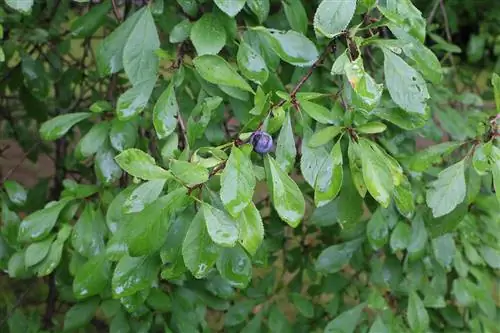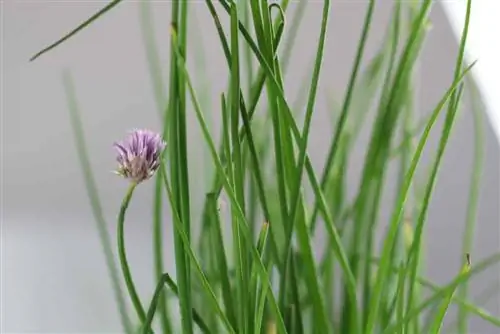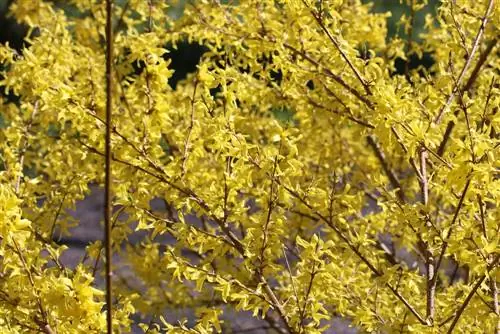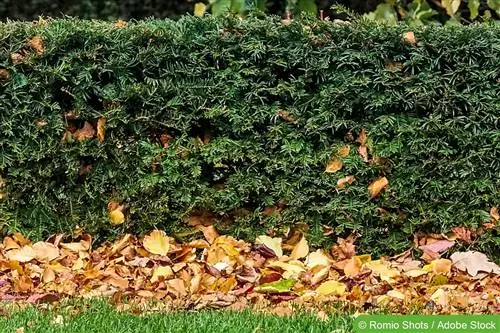- Author admin [email protected].
- Public 2023-12-17 03:39.
- Last modified 2025-06-01 06:48.
The blackthorn or Prunus spinosa, as it is known in botanical terminology, is popular with bees and birds due to its flowers and berries. However, it needs proper care.
Location
The planting site should meet a few criteria. These factors include:
- warm
- sunny to partly sunny
- sheltered from the wind
The east and south sides are therefore ideal. However, windy or shaded areas are not suitable.
Substrate
The blackthorn is not demanding in itself, but the soil must still correspond to the properties of the plants. The substrate should therefore meet the following points:
- permeable
- nutrient-rich
- pH value between 6 and 8, 5
- dry
Tip:
Waterlogging should be avoided. It may therefore make sense, for example, to install additional drainage.
Plants - timing & procedure
When the blackthorn hedge is planted depends on the preparation. Container plants are best planted in spring or autumn. Bare-root blackthorn is best planted in autumn.
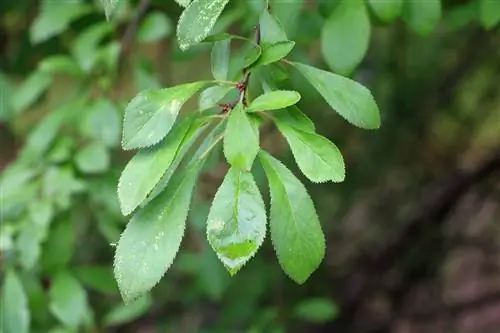
In any case, it must be ensured that a frost-free day is chosen. In addition, the following steps must be followed:
Prepare the excavation and soil
The excavation must be done first. It is ideal to create a ditch for the hedge. The soil should be sifted to remove stones and roots. If the substrate tends to become compacted, sand, gravel or coconut fiber can be mixed in to make it more permeable.
Add nutrients
Since sloes require nutrient-rich soil, the soil should be enriched with fertilizer. Compost soil, manure, leaves but also long-term fertilizer or horn meal can be suitable. It is important to check the pH value of the substrate in advance and choose appropriate nutrient sources.
Laying drainage
Since blackthorn is very sensitive to waterlogging, drainage is recommended in areas with high groundwater or nearby bodies of water. A layer of coarse gravel or larger stones at the bottom of the planting hole ensures that the water can drain away better and the roots are not directly in it.
Insert plant
The planting hole should be at least twice as deep and as wide as the root ball. It is also important to ensure that there is enough fresh and loose substrate available and that the plant is planted at exactly the same depth as it was previously in the container.
Water
After planting and compacting the soil, the blackthorn should be watered generously. This promotes growth.
Protection
Whether the blackthorn hedge is planted in spring or autumn, frost protection is always advisable initially. Applying mulch, compost or straw prevents the soil from freezing and protects the roots.
Tip:
For longer hedges, we recommend renting a mini excavator to dig up the earth. This simplifies and speeds up the work.
Distance when planting
If the blackthorns are to be planted as a hedge, a distance of one and a half to two meters between the plants makes sense. This seems very far at first, but it makes sense for supply due to the sprawling root ball and broad growth.
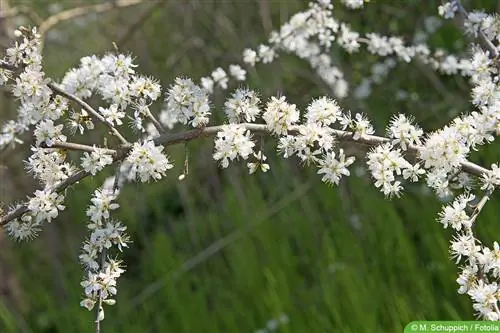
Tip:
If the distance to walls and paved paths is small, it makes sense to use a root barrier. It prevents the roots of the blackthorn from damaging the stones or pushing them out of position.
Blend
The blackthorn tolerates pruning well. However, a waste is not absolutely necessary. Without any trimmings, there are comparatively many berries on the branches. This benefits bees, butterflies and birds.
If the blackthorn is not shortened and shaped, it can grow to very large dimensions comparatively quickly. This can, for example, overshadow other plants or impair paths. In addition, the sloes can grow very densely over time, which makes them a wonderful habitat for animals, but the inner branches can also become bare.
In any case, there are a few basics to pay attention to when making the offcuts. These are:
- choose a frost-free day for the measure
- Check the hedge for bird nests in spring and summer
- use sharp cutting tool
- Disinfect cutting tools before use
Tip:
The blending should also be carried out on a dry, warm day if possible. This means that the interfaces close more quickly and the risk of invading germs is reduced.
Topiary
Due to their good cutting tolerance, sloes can be easily shaped and radically cut back. The best time for this is spring, directly after flowering. It is important to first check the blackthorn hedge for bird nests.
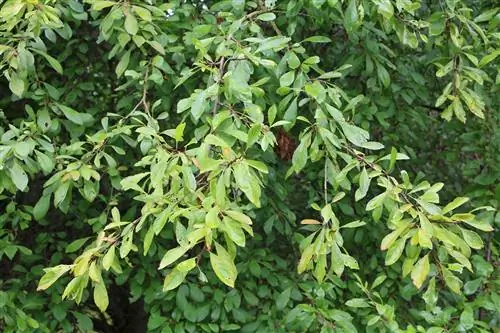
If these are available, the cutting should not take place until autumn. This is especially true if the hedge needs to be cut back heavily. Removing or shortening individual branches in order to maintain the shape is still possible at any time.
Tip:
If the blend is only carried out every three years, but then it turns out to be stronger, the berries of the blackthorn become particularly large.
Thinning
Thinning is best done in autumn. This involves removing any branches that grow inwards, cross over each other or form areas that are too dense.
Care and fertilization
Apart from the trimmings, blackthorn is easy to care for. For example, watering is only rarely necessary. However, it should be fertilized, especially after cutting, as the loss of leaves also results in a loss of nutrients. In addition, the reduced number of leaves reduces photosynthesis performance.
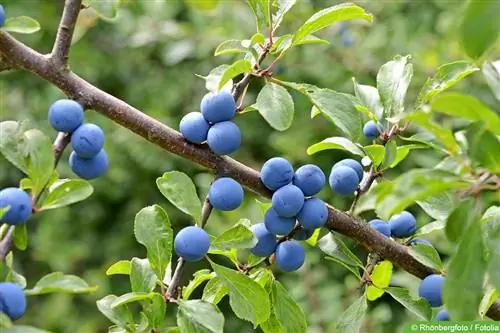
The following fertilizers can be used for he althy growth:
- Horn meal or horn shavings
- Long-term fertilizer
- Compost
Fertilization in spring and additional nutrients in late summer are ideal. To avoid chemical burns on the roots caused by the fertilizers, the fertilizer should either be applied directly before rain or watered afterwards. This distributes the nutrients evenly in the soil and prevents damage.

